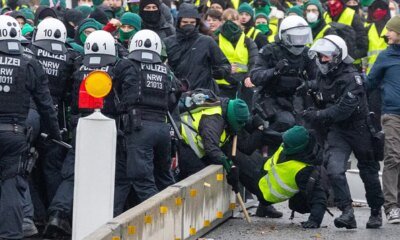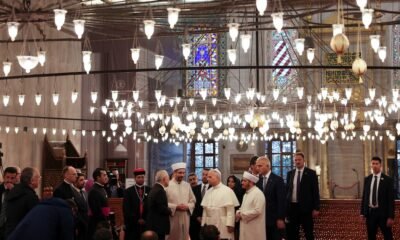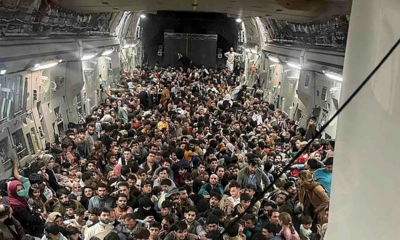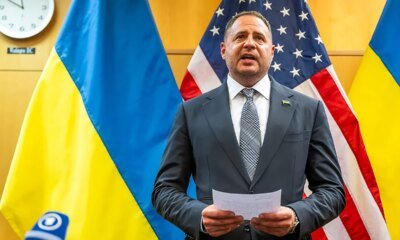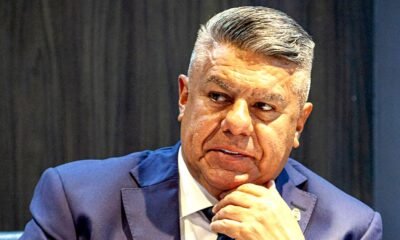INTERNACIONAL
Hamas endgame is ‘long-term’ and is playing out for all to see as Israel pushes deeper into Gaza

NEWYou can now listen to Fox News articles!
Israel’s security cabinet overnight Thursday approved Prime Minister Benjamin Netanyahu’s proposal to defeat Hamas, including taking control of Gaza City, after the Palestinian terror group torpedoed U.S.-mediated negotiations.
However, questions remain as to what the terrorist organization’s endgame is, and if they can be fully defeated.
«Hamas is an offshoot of the Muslim Brotherhood. It is a radical jihadi organization with a written and spoken goal to annihilate the State of Israel and replace it with a Sharia-based regime,» Jonathan Conricus, former Israel Defense Forces (IDF) spokesperson and senior fellow at the Foundation for Defense of Democracies, told Fox News Digital.
«They operate according to that aim and objective. Hamas’s October 7 terror attack was part of how they planned to fulfill that goal—defeating Israel, killing all the Jews, and taking control of the area.
NETANYAHU CONFIRMS ISRAEL WILL TAKE CONTROL OF GAZA TO ‘LIBERATE’ PEOPLE FROM HAMAS
Hamas terrorists marching in Gaza during a parade. (Getty Images)
«They are strategic, calculated, and extremely cynical—but definitely not suicidal,» he added. «They may employ suicidal tactics, but their strategic aim is long-term and deliberate.»
For example, Hamas’ «starvation» campaign generated significant international pressure on Israel, leading to steps such as the IDF announcing tactical pauses in fighting and facilitating the delivery of humanitarian aid to the Gaza Strip in coordination with international partners.
In the span of a week late last month, the leaders of France, the United Kingdom and Canada announced their intention to recognize a Palestinian state, which the Israeli government denounced as a reward for terror.
In a recent interview with Al Jazeera, senior Hamas terror leader Ghazi Hamad said, «The initiative by several countries to recognize a Palestinian state is one of the fruits of October 7.»
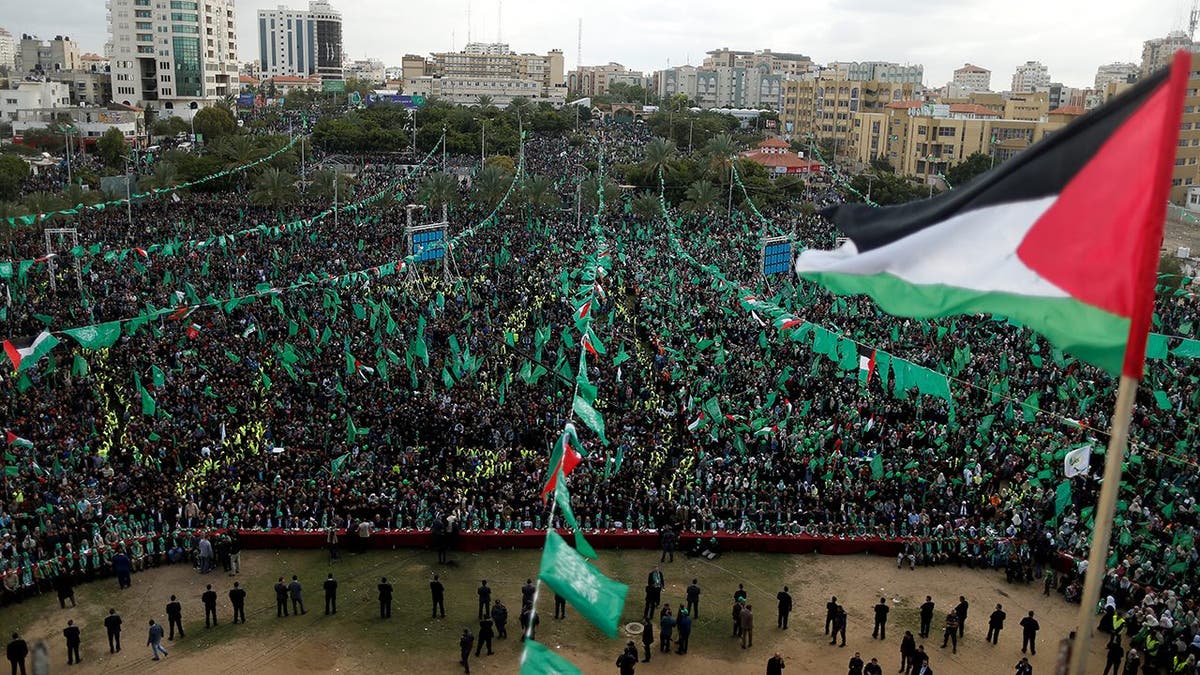
A Palestinian flag flies as Hamas supporters take part in a rally marking the 30th anniversary of Hamas’ founding, in Gaza City on Dec. 14, 2017. (REUTERS/Suhaib Salem)
Conricus said that such recognition has emboldened them. «They’ve hardened their negotiating stance and made it clear they don’t feel the need to compromise—which, of course, has a direct impact on the lives of the Israeli hostages.»
U.S.-mediated negotiations aimed at securing a ceasefire and the release of the 50 remaining captives have stalled, with Hamas showing increasing inflexibility, according to officials familiar with the talks.
Last month, U.S. special envoy to the Middle East Steve Witkoff said Washington was weighing «alternative options» as Hamas «does not appear to be coordinated or acting in good faith.»
NETANYAHU’S SECURITY CABINET TO MEET ON GAZA WAR, AS SOME IN ISRAEL CALL TO RESETTLE ENCLAVE
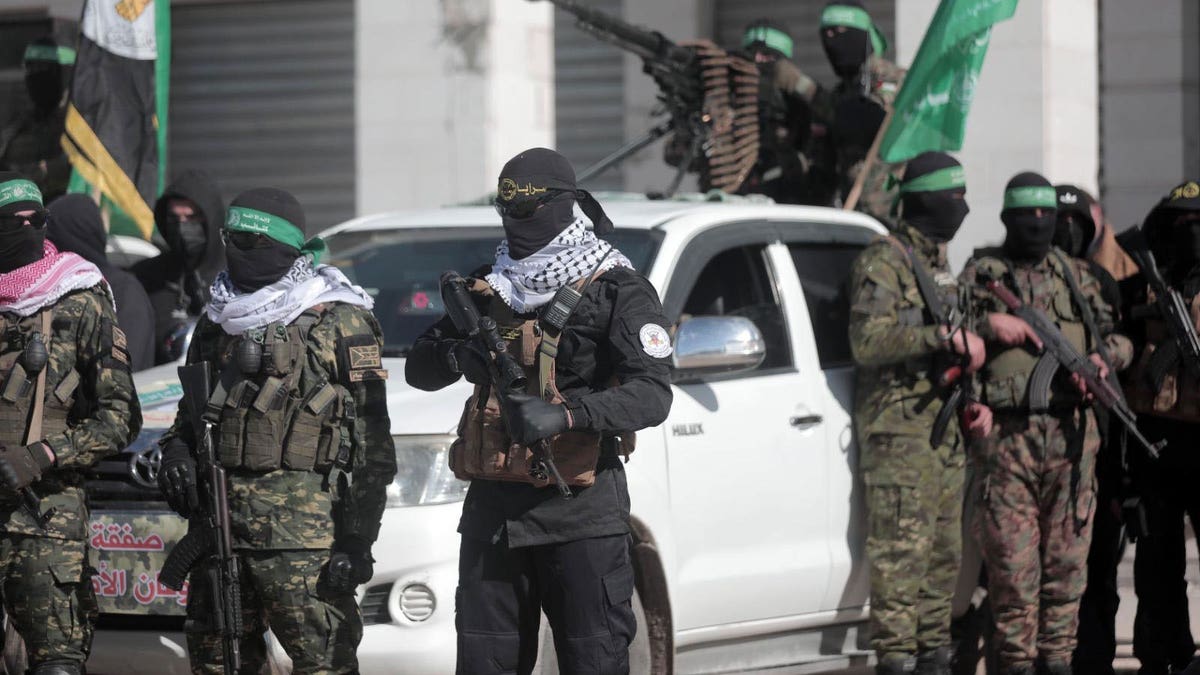
Members of the Hamas terror group gather in Gaza in preparation for the release of four female hostages as part of the ceasefire deal with Israel. (TPS-IL)
Palestinian affairs analyst Khaled Abu Toameh told Fox News Digital that Hamas’s position has been clear since the start of the war: to prevent Israel from achieving its objectives of removing the terror group from power and rescuing the hostages by force.
«It’s important for Hamas to be seen as emerging triumphant. They believe they’ve reached a point of no return.
«They know the international community will place the blame on Israel as the casualty toll rises. There is no pressure on Hamas to stop,» he added.
At the end of the day, Abu Toameh said, Hamas’s long-term strategy is to ensure its continued existence so it can carry on its jihad against Israel.
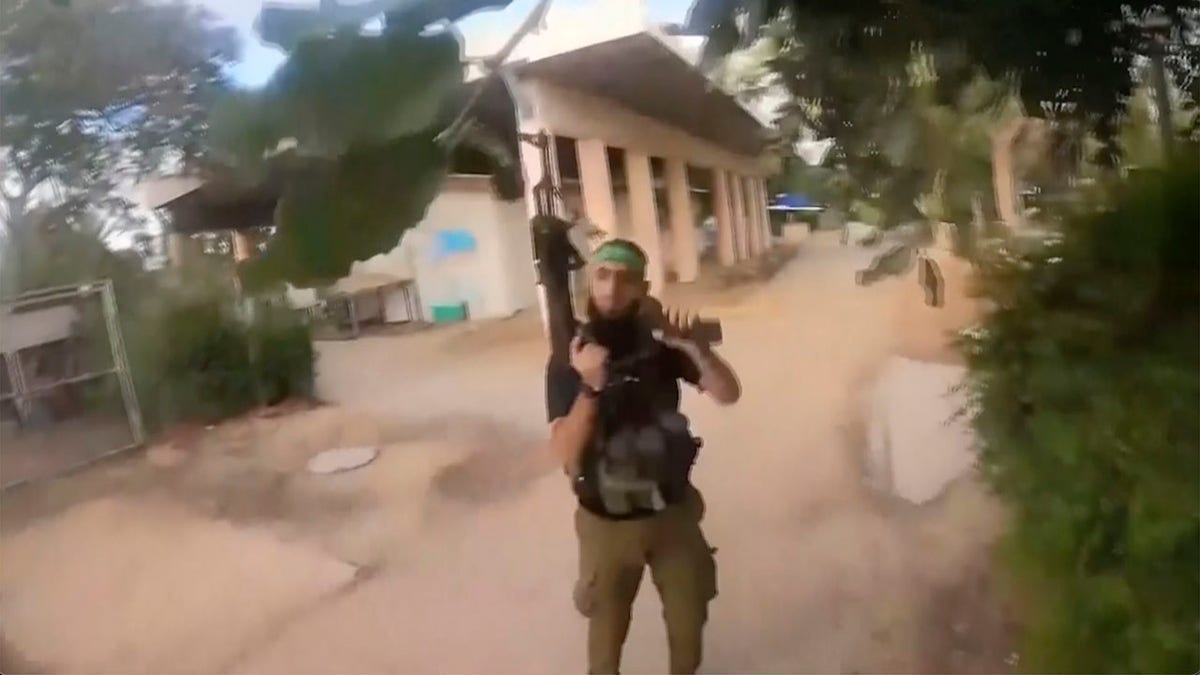
This image, made from undated bodycam video footage taken by a downed Hamas terrorist and released by the Israel Defense Forces, shows a Hamas terrorist walking around a residential neighborhood at an undisclosed location in southern Israel on Oct. 7, 2023. (Israel Defense Forces via AP)
«October 7 was just another phase in this jihad,» he said. «It’s a jihad that began shortly after Hamas’s founding, when they unveiled their charter in 1988. The charter explicitly states that this land—the holy land, from the river to the sea—is Muslim-owned and will be liberated through jihad. It didn’t start with October 7, and it won’t end with October 7,» Abu Toameh warned.
CLICK HERE TO GET THE FOX NEWS APP
Experts say to understand the terror group is to simply look at its founding charter, which describes the «struggle against the Jews» as «very great and very serious,» requiring «all sincere efforts.» It calls the Palestinian terror group «one squadron» of a wider Arab and Islamic force that must continue fighting until «the enemy is vanquished and Allah’s victory is realized.»
world,israel,terrorism,conflicts,middle east
INTERNACIONAL
Un abecedario para restablecer la democracia: segunda parte
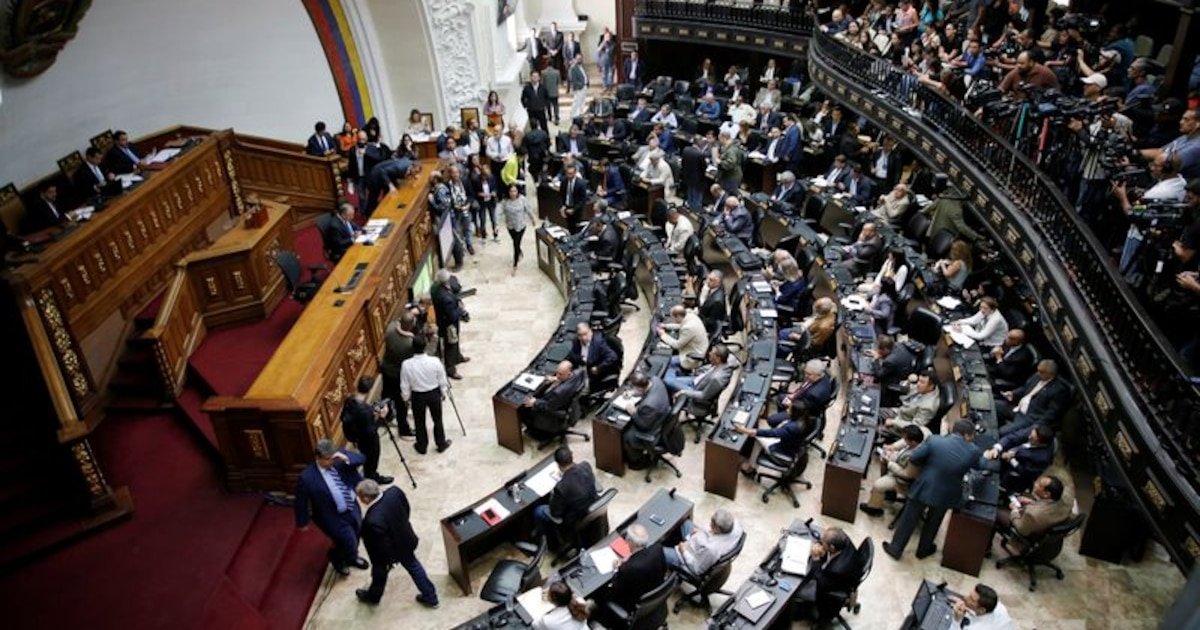
En días pasados planteamos la necesidad de “Un Abecedario para restablecer la democracia”, convencidos de que a pesar de sus incontables beneficios se le “zarandea” de un lado a otro no pasando, por lo menos, en algunos cuantos países por su mejor momento. Entiéndase lo analizado como “Consideraciones preliminares” y que a partir de ahora se analizarán en este y posteriores ensayos el contenido de las letras del Abecedario. Empezamos, por consiguiente, con el:
Letra “A”
Capítulo I
A la cual calificamos en las “Consideraciones preliminares” como “aquella integrada por diputados elegidos por el pueblo en votación universal y secreta, a fin de que en ejercicio de la potestad que al último, como es bien sabido, le es soberana y a través de una constitución se estatuya, organice, discipline al Estado y se reafirmen los fines que le son propios y que realmente se hagan realidad. Al texto constitucional, en atención a su jerarquía, como ley superior de un país, se le denomina, asimismo, “Carta Magna, Ley Suprema y Ley de Leyes. Acotamos, también, con relación a Venezuela, que no ha escapado de la tendencia propia de los países de América Latina, a los cuales “erga omnes” les ha costado crearse, componerse y estabilizarse con la eficiencia debida con arreglo a lo estatuido por la asamblea constitucional, a la cual, incluyendo sus consecuenciales derivados, más bien se le ha asumido como una pelota de futbol que va y viene de arco en arco, pero sin entrar en ninguno de los dos. Ha de atribuirse, por tanto, significado, como se les ha ocurrido a estudiosos del tema, a la frase “la necesidad constituyente”, ilustrativa en lo concerniente a que si no nos enseriamos, alrededor de la burla proseguiremos con la diversión. Nosotros, conscientes del “caos constitucional”, hablaríamos más bien de “una determinante urgencia de la necesidad”. Pues, ha de realzarse la urgencia, por demás imperativa, del tratamiento que la crisis demanda.
Nos inclinaríamos, igualmente, en aras de una mayor precisión, por afirmar que “el propósito” de una Asamblea Constituyente “es la de edificar a una república”, lo cual no deja de complementar la apreciación con respecto al “balón de futbol”, pues, para la Academia de la Lengua Española “el sustantivo “propósito”, está referido al “ánimo o intención de hacer algo”, pero, asimismo, “el no hacerlo”, hipótesis no ausente en nuestra historia, ya que a lo largo de ella nos cuesta y bastante constatar una profusa diversidad de intentos por edificarnos como “república”, lo cual pareciera conducir a que no han sido “asambleas constitucionales serias”, más bien, tentativas alimentadas por el “ánimo o intención de no hacer algo”. Esto es, la segunda interpretación que al sustantivo “propósito” atribuye la Real Academia.
Algunas lecturas, por demás interesantes, entre ellas, la del Doctor en Ciencia Política de México, Sergio Ortiz Leroux (República y republicanismo, enero-abril 2007), sustentan que la creación de una república se ha confrontado con dos tipos de “republicanismo”, el “democrático-radical”, conforme al cual no se teme a la democracia y se sustenta que la idea del bien común es coincidente con la ecuación “el gobierno del, para y por el pueblo”. Se le identifica, asimismo, como “el de los pobres”. La segunda aproximación, el gobierno de los ricos, se alimenta en la oligarquía, en la autocracia y en “un único líder o grupo de individuos”, por lo que es escasa “la tolerancia al pluralismo político”. En lo conexo a la república se escribe que más bien ha de asociársele con la defensa de la libertad, a fin de “decidir quiénes y cómo queremos ser”, excluyendo, por tanto, la dominación, esto es, a ser gobernado por otro. No serlo conduce a autogobernarnos.
Esta segunda tipología de “republicanismo”, para Ortiz Leroux, es la de “una sociedad de propietarios”, y por tanto, de quienes dependen aquellos que no lo son, hipótesis a la que se cuestiona “que quien vive a merced de otro no es libre sino esclavo”, por lo que la ciudadanía a edificar, además de proporcionarnos derechos vinculados a la libertad, nos reclame obligaciones. En el republicanismo liberal-democrático, el bien común está asociado con el gobierno de las leyes y con la noción moderna de representación. La participación del pueblo es, por supuesto, importante, pero limitada a la elección de los gobernantes. No participa directamente en el gobierno, apreciación que conduce a preguntarse si pueden existir “repúblicas no democráticas”.
En esta modalidad republicana se reafirma la autonomía del individuo frente al Estado y el predominio de sus derechos individuales, particularmente, la propiedad, lo cual se evidencia al indagar con respecto a sus deberes para con la comunidad, limitados, en principio, al interés de sus propios derechos mediante el sufragio. La participación de los individuos en la esfera pública se reduce, consecuencialmente, a la mera expresión de los intereses privados mediante el voto, terciando las preferencias de los electores en puestos de representación. En la asamblea obviamente los derechos de los pudientes tendrán preferencia.
Las consideraciones anteriores corroboran que “edificar a “una república” es cosa seria”, por lo que, también, ha de serlo “una Asamblea Constituyente”. Y no menos determinante la representación popular que la componga. Consecuencialmente, ha de concluirse en que “no todos los países son repúblicas o que, por lo menos, las hay distintas y hasta opuestas”.
Ante el escenario tengamos en cuenta “la problemática en la cual se ha desenvuelto “la asamblea constituyente” en Venezuela”, cuyo análisis, al analizarse la numerosa diversidad de tentativas provoca determinar si han sido sinceras o “disfrazadas”. En efecto, desde nuestra independencia en 1811 hemos tenido formalmente 25 constituciones, si incluimos nuestra Acta de Independencia de 5 de julio de 1811 y la Constitución de la Gran Colombia de 1821. Se acota al respecto que el Acta de Independencia no se clasificaría como una Constitución, sin embargo, para estudiosos del tema sí lo es, pues es la que nos constituye como pueblo, manifestada aun antes de la independencia (Grupo de estudio integrado por el profesor de derecho constitucional, Gustavo Planchart Manrique, su coordinador y Manuel Caballero, Marianela Ponce, Manuel Pérez Viva Vila, Nikita Harwich Vallenilla, Fundación Empresas Polar).
En aras de la apreciación, leemos que la referida Acta de Independencia lleva incita dos providencias, derivadas del ejercicio de la soberanía: 1. Poner término al régimen colonial español y 2. La determinación de principios conforme a los cuales nos apartaríamos del estatus de colonia, para instituirnos en “república”. Circunstancias que en criterio de respetados analistas coadyuvan a calificar a la referida “acta” como derivada de “una asamblea constituyente”. La primera, deberíamos pensarlo, de una cadena sucesiva que ilustran a nuestra historia, tantas, que resulta por demás difícil encontrar una respuesta idónea al ¿Por qué? Un largo debate con el cual coexistimos desde 1811 hasta nuestros días.
Es recomendable, pues, admitir que los venezolanos hemos propendido, como en un número importante de países, a “una institucionalidad republicana”. Y, asimismo, aceptamos que la metodología ha sido “una asamblea constituyente” y en todos los supuestos, a pesar de que así, formalmente, no se le haya calificado. Esto es, que aplicando el criterio material (libertad, igualdad, dignidad y justicia) no otra conclusión pareciera posible.
En el compendio “Constituciones de Venezuela”, digno de elogiar, se hace una adecuada selección de los textos constitucionales a lo largo del acontecer venezolano, en procuración de “una república” seria, estable y eficiente. Estamos seguros de que el excelso profesor venezolano Allan Brewer Carías, coordinador del trabajo, así como los integrantes del equipo que le acompañó, han debido preguntarse ¿Por qué tantas constituciones? Lamentablemente no deja de ser difícil contestar, no obstante, estar a las puertas del año 2026 del presente siglo. Pero, asimismo, con respecto a las razones para haberse tirado por la ventana, hecha añicos, la Constitución de 1961, cuya estabilidad se prolongó durante 4 décadas y con ella la democracia más estable y próspera con la cual hemos contado. Sustituyó, como leemos, a la del 11 de abril de 1953 y refleja las tendencias todavía actuales de la democracia occidental al tomar en cuenta:
1. Las necesidades contemporáneas han orientado hacia un socialismo intervencionista, en búsqueda de un equilibrio estable y fructífero con el antiguo fondo liberal,
2. El espíritu de la nueva Carta traduce un liberalismo totalmente ausente de la Constitución anterior, que concretaba la cabal expresión de una dictadura,
3. Ha de advertirse que fue aprobada por un “congreso” electo popularmente, a raíz del fin del régimen antidemocrático.
No cuesta, por consiguiente, mucho esfuerzo para que concluyamos que atendiendo a un criterio material, la Constitución democrática de 1961 fue resultado del ejercicio de la función constituyente. Esto es, “el Congreso ejerció la función constituyente”. Cómo que hubiese sido una “asamblea”.
Es por demás conocido que esa constitución fue derogada por “una asamblea constituyente”, la cual establecería una sociedad democrática, participativa y protagónica, un Estado de justicia, la consolidación de la libertad, la independencia, la paz, la solidaridad, el bien común, la integridad territorial, la convivencia y el imperio de la ley, el aseguramiento del derecho a la vida, al trabajo, a la cultura, a la educación, a la justicia social y a la igualdad… La República, pasó a llamarse “Bolivariana” y… fundamenta su patrimonio moral y sus valores de libertad, igualdad, justicia y paz internacional… Venezuela, nominalmente, se constituye en un Estado democrático y social de Derecho y de Justicia, que propugna como valores … la vida, la libertad, la justicia, la igualdad, la solidaridad, la democracia, la responsabilidad social y en general, la preeminencia de los derechos humanos, la ética y el pluralismo político… El gobierno… es y será siempre democrático, participativo, electivo, descentralizado, alternativo, responsable, pluralista y de mandatos revocables…. la Constitución es la norma suprema y el fundamento del ordenamiento jurídico.
Venezuela, cuesta dudarlo, está hoy a las puertas de una nueva “Asamblea Constituyente” y para el mismo fin, o sea, la elaboración y promulgación de una, también, nueva, Constitución, la número 26. Pensábamos, incluyendo a unos cuantos asambleístas de la de 1999, que la de 1961 sería la última, pues las cartas magnas requieren del tiempo necesario para consolidarse, acudiéndose a las enmiendas y a las reformas con la finalidad de adecuarlas a situaciones reales que vayan surgiendo. No un “plumazo” fue suficiente, hábito en Caracas, donde el escribano lo ha hecho nada más y menos que en 25 ocasiones. Y que lo más grave es preguntarnos ¿por qué y para qué?
Las respuestas, lamentablemente, más que difíciles, por no pensar que parecieran no existir. Las causas para ser como somos, si es que allí pudiera encontrarse algún motivo de “nuestra incontinencia institucional”, algunos estudiosos la han identificado en las limitaciones que nos impusiera la colonización española, argumentación refutada duramente en el libro “Nada por lo que pedir perdón”, de la autoría de Marcelo Gullo Omodeo, en cuyo prólogo escrito por Carmen Iglesias, Directora de la Real Academia de la Historia, manifiesta que el autor está en lo cierto cuando afirma que “los españoles llevaron a América su cultura, su religión, su lengua, su organización social, los valores de la civilización occidental, todo lo que eran y tenían”. Portaron consigo un cuerpo legislativo, las leyes de Indias y otras Disposiciones sucesivas, que permitían recurrir ante los tribunales de justicia a los súbditos del Rey, bajo la potente protección de la Monarquía Hispana, también, denominada Española. En la lectura de Don Marcelo pareciera inferirse que somos nosotros quienes deberíamos hacer genuflexiones a los españoles y no lo opuesto.
Las complejidades derivadas de la lucha entre unos y otros, etiquetadas desde antaño en la Asamblea Nacional de Francia, como “la derecha y la izquierda”, parecieran que hubiesen sido estatuidas más bien por un Ser Superior y para la eternidad. Pues, se les sigue usando y en lo que respecta a Caracas en más de una ocasión. En rigor, no han dejado de enredarnos y no dejaría de ser objetivo expresar que no nos han afectado. Aunque parezca mentira se le prosigue usando y que transcurridas ya tantas centurias, en las definiciones de los poderosos y afincados fuertemente en principios religiosos y profesionalmente mejor preparados y en el denominado proletariado, al cual integra “el trabajador que no posee medios de producción y que obtiene su salario de la venta del propio trabajo”, para unos cuantos, “el verdadero pueblo”, titular de la soberanía y de la constitucionalidad.
El próximo ensayo estaría referido, conforme a las pautas del abecedario, a “la Constitución, Ley Suprema y Ley de Leyes”. Genuina manifestación de la “Asamblea Constituyente”. Capítulo II del ensayo.
@LuisBGuerra
INTERNACIONAL
Donald Trump muestra contradicciones al anunciar el indulto de un narcotraficante y amenazar a Venezuela
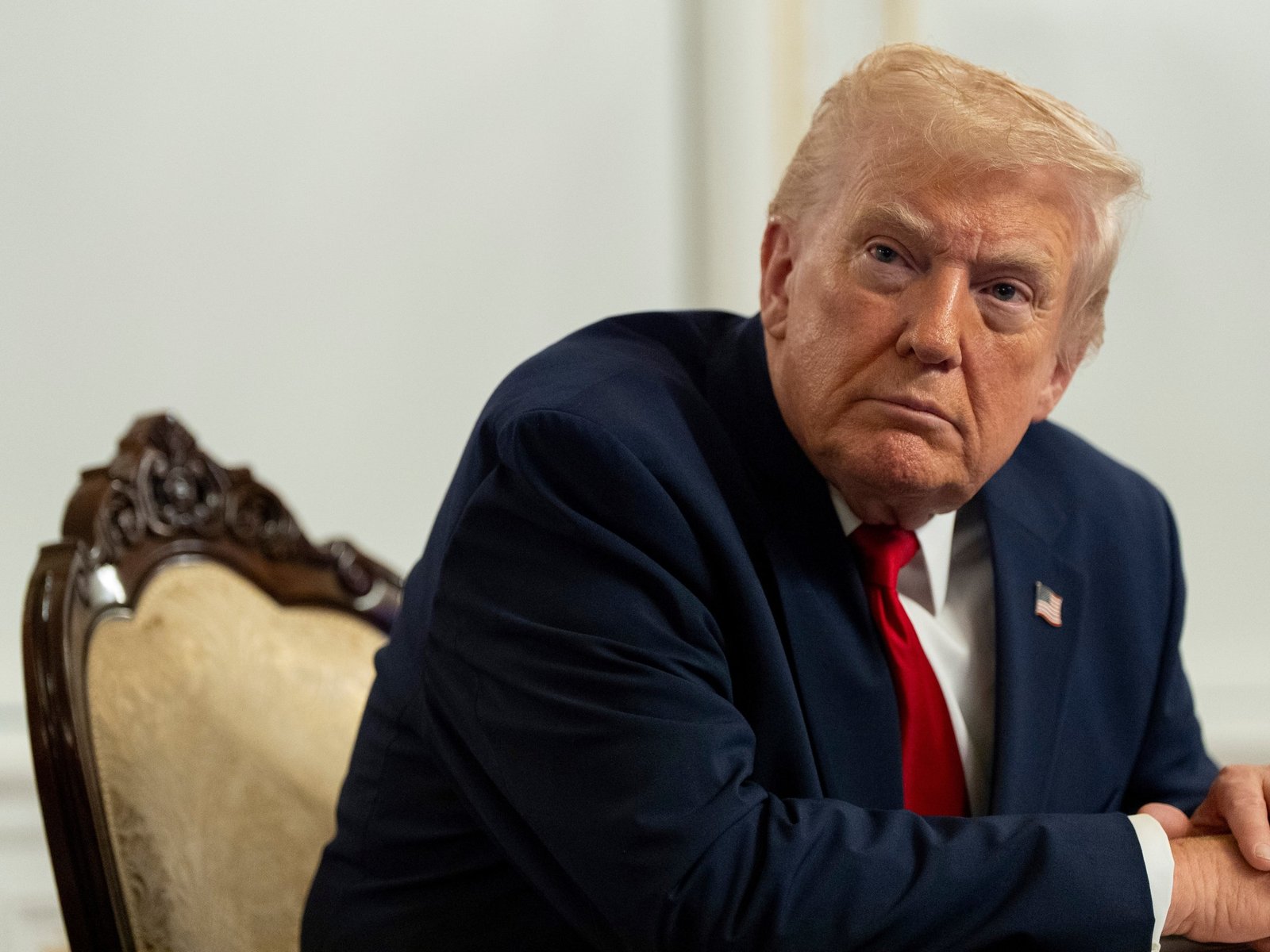
Sorpresiva decisión de Trump
INTERNACIONAL
Enfermedad verde, el extraño padecimiento que afectaba a jóvenes vírgenes en el siglo XVII

En la Londres del siglo XVII, decenas de jóvenes mujeres morían cada año por la llamada “enfermedad verde”, un diagnóstico desaparecido hoy de la medicina.
El fenómeno se registró principalmente entre mujeres adolescentes, alrededor de los años 1650. La afección preocupó tanto a médicos, familias y autoridades, que intentaron explicar sus causas y buscar posibles tratamientos. El término marcó la historia médica durante siglos, aunque para la actualidad su significado resulta confuso.
De acuerdo con National Institutes of Health, las primeras descripciones médicas de la enfermedad destacaron varios síntomas. Las jóvenes afectadas presentaban rostros pálidos, debilidad extrema, dificultad para alimentarse, hinchazón de tobillos y una pronunciada apatía.

Según detalló JSTOR Daily, numerosos médicos del período asociaron la enfermedad exclusivamente con mujeres jóvenes que no habían contraído matrimonio. Así, surgió la expresión popular “enfermedad de las vírgenes”, reforzando la idea de que un cierto estado civil guardaba relación directa con la salud.
John Graunt, considerado precursor de la estadística en Inglaterra, analizó el fenómeno en la capital británica. En sus informes, empleó eufemismos para evitar detalles explícitos sobre una supuesta causa sexual, pues en la época resultaba vergonzoso mencionarla.
En ese sentido, Graunt anotó en su tabla de mortalidad “Stopping of the Stomach”, pero aclaró que, en verdad, hacía referencia a la enfermedad verde.

Durante siglos, la enfermedad también ocupó un lugar notable en la cultura popular. Shakespeare empleó el término en Romeo y Julieta y en Henry IV, Parte 2 para ridiculizar o señalar debilidades. La referencia a una apariencia pálida y enfermiza reforzó la idea de un vínculo entre la salud física y el estado emocional o social de los adolescentes.
Según el historiador Winfried Schleiner, la enfermedad resultó tan conocida que se convirtió en un recurso de la sátira política, la literatura y el teatro de la época.
Las jóvenes con “enfermedad verde” despertaron no solo preocupación médica, sino también comentarios mordaces y bromas sobre su situación personal y social. La descripción más difundida incluía rostros pálidos y “corazón tembloroso ante el más pequeño esfuerzo”.

De acuerdo con National Institutes of Health, la denominación proviene del griego chloros, que significa amarillo verdoso, resaltando el aspecto pálido de las afectadas. Los médicos del siglo XVI, como Johann Lange y Rodrigo a Castro, interpretaron la dolencia vinculándola a desequilibrios de los “humores” y atribuyeron su causa a la retención de “sangre mala” por la falta de actividad sexual o por vasos sanguíneos demasiado estrechos.
Ante la imposibilidad de recomendar el matrimonio para todas las jóvenes, sugerían sangrías o enemas como tratamiento alternativo, especialmente en el caso de mujeres consagradas a la vida religiosa.
La enfermedad permaneció ligada a la feminidad durante generaciones. Sin embargo, algunas obras literarias extendieron el término, en clave de burla, a hombres que no bebían alcohol ni tenían experiencia amorosa. Estos usos evidenciaron la carga simbólica y social del diagnóstico mucho más allá de cualquier base fisiológica comprobada.

Helen King, citada por Schleiner, detectó que menciones a la “green sickness” aparecieron en manuales médicos hasta los años 1920. No obstante, el diagnóstico desapareció del repertorio de enfermedades reconocidas durante el siglo XX. Las razones de este abandono se vinculan tanto al cambio en las costumbres sociales como a la comprensión médica de los síntomas.
De acuerdo a diversas investigaciones, médicos de la época confundieron manifestaciones de anemias reales con nociones sociales y morales relacionadas con la virginidad. La medicina moderna identifica la anemia como una afección causada por deficiencias nutricionales, enfermedades crónicas u otros motivos, sin vincularla al estado civil o a cuestiones morales.
Algunas crónicas y versos satíricos, como los referidos al duque de Monmouth, reforzaron la idea de que solo el matrimonio o las relaciones sexuales podían “curar” la enfermedad en las jóvenes.
Así se profundizó la estigmatización social sobre las mujeres solteras o quienes no deseaban contraer matrimonio, catalogándolas de enfermas por su estado.
A lo largo del tiempo, la noción de “enfermedad verde” funcionó como un reflejo de los prejuicios y el desconocimiento científico sobre la salud de las mujeres adolescentes.
El diagnóstico reflejó la interacción de factores culturales, médicos y religiosos en una época donde el acceso al conocimiento médico era limitado y dominado por creencias heredadas de la Antigüedad.
Actualmente, no existe ninguna evidencia que vincule la falta de matrimonio con enfermedades hematológicas. La desaparición del término “green sickness” y su olvido en la medicina contemporánea muestran cómo los diagnósticos pueden estar más influidos por valores sociales que por la evidencia científica.
Según especialistas como Helen King y Winfried Schleiner, el estudio de “enfermedad verde” permite comprender cómo la sociedad interpretó los síntomas de jóvenes mujeres y cómo la ciencia evolucionó al dejar atrás los mitos y avanzar hacia una comprensión basada en datos verificables y observación clínica.
green sickness

 POLITICA3 días ago
POLITICA3 días agoLa financiera vinculada a “Chiqui” Tapia utilizó 42 empresas falsas para lavar $72 mil millones: la lista completa

 DEPORTE3 días ago
DEPORTE3 días agoClaudio Tapia: “No es la primera vez que vivimos esto, pasaron tres presidentes en mis 9 años y me quedan muchos más”

 ECONOMIA2 días ago
ECONOMIA2 días agoANSES confirmó aumento y bono de diciembre: cuánto cobran jubilados y beneficiarios de asignaciones

